Unrelenting margin pressures from adverse market forces and unprecedented regulatory demands have made the benefits of robust balance sheet management more obvious and more critical. This elevates the role of having the right ALM modeling solution, with a particular focus on the ability to produce accurate IRR analysis reports.
ALM models are expected to be accurate — not conservative — measures of expected performance, earnings-at-risk (EaR), economic-value-at -risk (EVAR) and liquidity coverage ratio (LCR). This expectation is accompanied by mandates for deposit behavior assumptions. Implementation of an ALM modeling solution is also now expected in almost all institutions, even those with comparatively small (e.g., less than $100 million) asset sizes.
In this paper, we describe ALM models’ versions and benchmark BB-ALM, BBA’s proprietary ALM model. There are three versions of ALM models: Entry, Intermediate and Advanced models.
Entry-level ALM models are the simplest of ALM modeling solutions. They provide basic levels of net interest margin simulation for a limited shock outlay using hard-coded assumptions. The problem is that entry-level ALM models often do not apply sustained interest rate paths used as the basis for interest rate simulation. Intermediate-level ALM use sustained forecasts of rate paths for rate shock simulations and behavioral modelling and classification of non-term deposits. The definition of an “advanced” ALM model has broadened over the last several years. Advanced-level ALM models are the solution for institutions that need maximum ALM model capabilities. This may be due to balance sheet complexity and derivative instrument valuations.
Backed by cutting edge Machine Learning algorithm and extensive data insights, BBA provides financial, enterprise and model risk management Software as a Service (SaaS) for financial services organizations globally. Regardless of our clients’ strategic orientation, BBA’s mission is to safeguard the financial resilience of our clients using advanced solutions. The following is the modular overview of BBA’s solutions:
Figure 1: Modular overview of BBA’s SaaS platform

BBA’s end-to-end, cloud-native solutions are designed for Finance, Risk and Treasury functions with the following unique value propositions (UVPs):
- Monthly subscription licensing
- Transparent risk models
- In-built macroeconomic scenarios
- Visualization of the impact of risks on P&L, balance sheet and equity
- Measurement of risk-adjusted return for each loan and portfolio in the loan book
- Open-banking regulations-compliant solution
BB-ALM is BBA’s flagship solution and provides coverage for the following risks:
- Interest rate risk
- Liquidity risk
- Investments risk
BB-ALM’s modules also provide coverage for automated Basel Capital Adequacy Ratio (BCAR), financial planning and analysis (FP&A), funds transfer pricing (FTP) and margin analysis and ALCO dashboard and reporting. Our clients also have access to BBA’s daily Market Rates Update and hedging advisory. In the section below, we provide coverage on each one of the above risks and modules.
1. Risks coverage
Interest rate risk modelling is complex. To help stakeholders better understand the impact of interest rate volatility on banking institutions’ balance sheet, BB-ALM decomposes interest rate risk into the following four areas:
1.1 Interest Rate Risk

1.2 Liquidity risk

1.3 Investment risk

2. BB-ALM’s Modules
The section below provides an overview of BB-ALM’s modular coverage:

3. Why BBA
BBA’s mission is to industrialize AI and analytics for mid-sized financial institutions using SaaS. Our state-of-art ML algorithm that powers up BB-ALM provides an unparalleled competitive advantage. Most ALM solutions use fixed shocks, e.g., 100 bps, 50 bps, etc., unless it is a regulatory requirement, BBA considers such shocks can be too restrictive and resultant analytics generated would not adequately capture the underlying risk. BBA’s approach to designing scenarios is based on the shape of the underlying yield curve which explains over 90% variance. Similarly, our use of KRD and equity modelling as a result of these shocks is an advanced practice not offered by many other ALM providers.
The rate curve developed using BDT model forms the basis for “rate paths” used to quantify the impact of repricing risk on NIM.

Using sustained rate scenarios, we determine the impact of KRD on equity (EVAR). Our approach focuses not just on current state, but also anticipates future shifts and ensures an inclusive risk management strategy. By signing up for BB-ALM, you will also have access to our hedging advisory to make your balance sheet futureproof.

